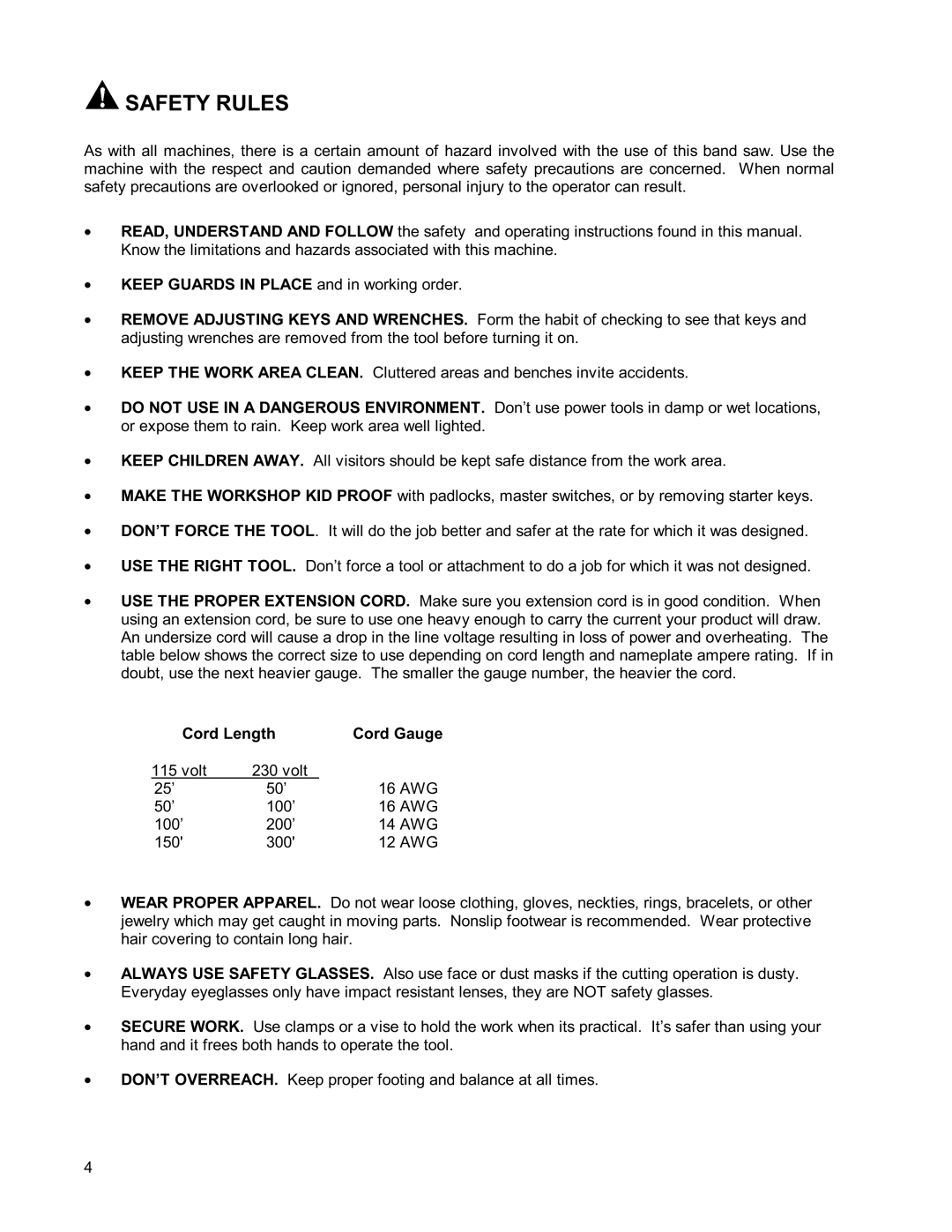 SAFETY RULES
SAFETY RULES
As with all machines, there is a certain amount of hazard involved with the use of this band saw. Use the machine with the respect and caution demanded where safety precautions are concerned. When normal safety precautions are overlooked or ignored, personal injury to the operator can result.
•READ, UNDERSTAND AND FOLLOW the safety and operating instructions found in this manual. Know the limitations and hazards associated with this machine.
•KEEP GUARDS IN PLACE and in working order.
•REMOVE ADJUSTING KEYS AND WRENCHES. Form the habit of checking to see that keys and adjusting wrenches are removed from the tool before turning it on.
•KEEP THE WORK AREA CLEAN. Cluttered areas and benches invite accidents.
•DO NOT USE IN A DANGEROUS ENVIRONMENT. Don’t use power tools in damp or wet locations, or expose them to rain. Keep work area well lighted.
•KEEP CHILDREN AWAY. All visitors should be kept safe distance from the work area.
•MAKE THE WORKSHOP KID PROOF with padlocks, master switches, or by removing starter keys.
•DON’T FORCE THE TOOL. It will do the job better and safer at the rate for which it was designed.
•USE THE RIGHT TOOL. Don’t force a tool or attachment to do a job for which it was not designed.
•USE THE PROPER EXTENSION CORD. Make sure you extension cord is in good condition. When using an extension cord, be sure to use one heavy enough to carry the current your product will draw. An undersize cord will cause a drop in the line voltage resulting in loss of power and overheating. The table below shows the correct size to use depending on cord length and nameplate ampere rating. If in doubt, use the next heavier gauge. The smaller the gauge number, the heavier the cord.
Cord Length | Cord Gauge | |
115 volt | 230 volt | 16 AWG |
25’ | 50’ | |
50’ | 100’ | 16 AWG |
100’ | 200’ | 14 AWG |
150' | 300' | 12 AWG |
•WEAR PROPER APPAREL. Do not wear loose clothing, gloves, neckties, rings, bracelets, or other jewelry which may get caught in moving parts. Nonslip footwear is recommended. Wear protective hair covering to contain long hair.
•ALWAYS USE SAFETY GLASSES. Also use face or dust masks if the cutting operation is dusty. Everyday eyeglasses only have impact resistant lenses, they are NOT safety glasses.
•SECURE WORK. Use clamps or a vise to hold the work when its practical. It’s safer than using your hand and it frees both hands to operate the tool.
•DON’T OVERREACH. Keep proper footing and balance at all times.
4
